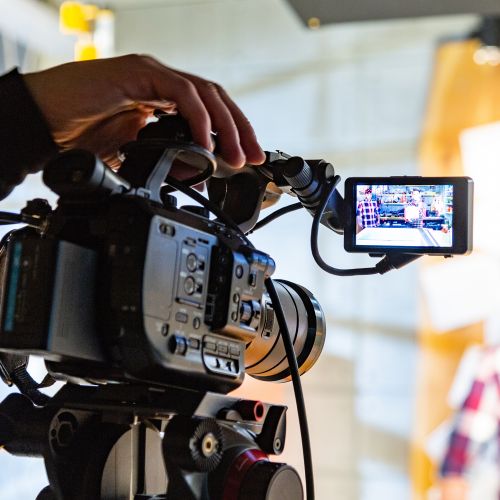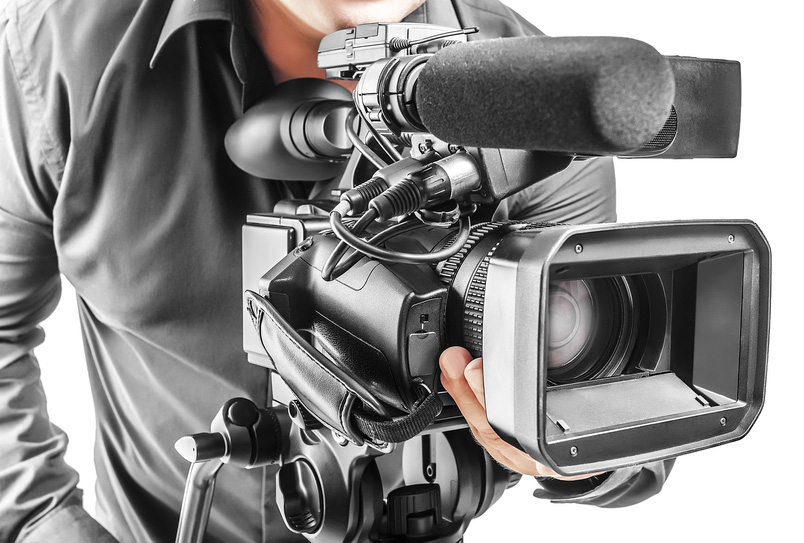How Legal Videography Helps Document Crucial Legal Evidence
Why Legal Videography Is Critical for Accurate Court Recordings
The duty of legal videography in court room setups can not be overstated, as it functions as an important tool for preserving the integrity of court documents. By capturing both spoken and non-verbal interaction, it enhances the quality of witness testaments and mirrors the subtleties of court room interactions. This detailed paperwork not only aids in lowering prospective misunderstandings but likewise sustains appellate testimonials, thus enhancing the judicial process. Nevertheless, the implications of incorporating legal videography into typical courtroom techniques increase vital questions about its broader effect on the lawful system. What might these effects require?
Importance of Visual Evidence
In the world of legal procedures, the relevance of visual evidence can not be overemphasized. Aesthetic evidence functions as an effective tool in developing truths, supporting testimonies, and boosting the total clarity of a case. This kind of evidence, which consists of pictures, video clips, and diagrams, can give a tangible context that spoken summaries often lack, thereby using juries and courts a clearer understanding of the situations bordering a situation.
Additionally, aesthetic proof help in the retention of info. Human cognition is inherently visual, and individuals are more probable to keep in mind and comprehend info presented in a visual format. In the court room, this can be vital, as engaging aesthetic proof can sway point of views and strengthen the story presented by legal reps.
Furthermore, using visual proof can decrease misconceptions and ambiguities that often emerge from verbal exchanges. By offering a straight depiction of events, visual evidence aids to eliminate subjective analyses and promotes a more objective assessment of the realities. As a result, the integration of aesthetic evidence into legal procedures not only enhances the integrity of the judicial process however additionally enhances the probability of attaining a simply outcome.
Capturing Non-Verbal Cues
Utilizing sophisticated videography techniques can considerably enhance the capture of non-verbal cues throughout lawful process. Non-verbal interaction, including faces, body language, and eye call, plays an essential function in sharing feelings and purposes that might not be explicitly stated in verbal testimony. legal videography. Lawful videography utilizes high-definition cameras and calculated angles to make certain that these refined hints are videotaped with clearness and accuracy
The capacity to analyze non-verbal behavior can provide valuable context to declarations made during court sessions. For instance, a witness's reluctance or self-confidence can be interpreted via their position or motions, possibly influencing the jury's assumption of credibility. Additionally, using close-up shots can assist concentrate on a speaker's expressions, permitting for a much more nuanced understanding of the testimony.
Furthermore, integrating multiple electronic camera angles can develop a thorough view of interactions, highlighting characteristics in between celebrations included. This complex technique not only improves the accuracy of the court record yet likewise help in maintaining the integrity of the judicial procedure - legal videography. Eventually, capturing non-verbal hints via lawful videography promotes a richer, extra full representation of courtroom procedures

Enhancing Testimony Integrity
The reliability of testimony can be substantially boosted through the usage of high-quality legal videography. Video recordings function as an unbiased tool that captures not only the talked words of witnesses but likewise the subtleties of their distribution, including tone, pacing, and emotional expressiveness. This diverse paperwork offers a more clear understanding of the witness's credibility and purposes, which can be critical in lawful procedures.
Moreover, legal videography lessens the capacity for misconceptions that might occur from written transcripts alone. When jurors can observe a witness's visit this site demeanor and try this site body movement combined with their statement, they are better furnished to examine the credibility and integrity of the evidence presented. This aesthetic context can strengthen the testimonial narrative, making it much more engaging and reliable.
Furthermore, the existence of a video recording can deter potential variances in testament. Witnesses might be much more careful in their statements when they know they are being tape-recorded, resulting in more precise and sincere accounts. Overall, high-grade lawful videography enhances the honesty of testimony, guaranteeing that the court has access to a complete and genuine depiction of the truths as communicated by the witnesses.
Sustaining Appeals and Reviews
Legal videography plays a crucial function in sustaining appeals and testimonials by giving a detailed aesthetic record of court room process. This aesthetic documents captures not only the spoken words of witnesses and attorneys yet also the subtleties of body language, intonation, and court room dynamics. Such aspects can be crucial in understanding the context of testimonies and arguments presented.
In the appellate process, where the focus is on errors of legislation and step-by-step justness, a video record can act as an important device for appellate courts. It makes it possible for judges to evaluate the initial trial context, making sure that decisions are based on a total understanding of the proceedings. The capability to aesthetically analyze the attitude of witnesses or like it the communications in between events can expose insights that composed records might ignore.

Furthermore, legal videography can help in making clear obscurities in statements or step-by-step judgments, consequently reinforcing the basis for an allure. By offering a dependable, objective account of what taken place in court, legal videography not just sustains the honesty of the lawful procedure however likewise equips all celebrations included to make educated decisions regarding their cases.
Enhancing Court Procedures
Enhancing court effectiveness, lawful videography simplifies processes by giving prompt accessibility to visual documents of proceedings. This modern technology allows judges, lawyers, and courts to take another look at essential testament and evidence, making sure that all events have a clear understanding of the situation. By recording the subtleties of verbal and non-verbal interaction, videography enhances the document, making it less complicated to grasp the context and weight of testimonies.

Furthermore, video clip recordings can assist in remote engagement in hearings, enabling greater versatility in scheduling and participation, which is especially important in complex situations entailing numerous stakeholders.
Verdict
In verdict, legal videography plays a vital duty in ensuring precise court recordings by supplying necessary aesthetic proof that catches both spoken and non-verbal interaction. This method boosts the dependability of statements, sustains appellate evaluations, and simplifies courtroom procedures. By fostering a comprehensive understanding of court dynamics, lawful videography eventually adds to a lot more fair judicial outcomes, enhancing the integrity of the lawful system and promoting informed decision-making.